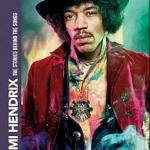In a recent post, I presented a case for seeing the sacrificial system of Leviticus as a continuous wedding feast. The portions of the animal placed on the altar were considered “bridal” food for Yahweh the divine husband.
I was drawing on the work of James Jordan, and Jordan suggests that there’s also a filial dimension to sacrifice. The sacrificial procedure follows the exodus story, as Yahweh’s son Israel comes to the mountain of the altar and (like Moses) ascends in a cloud to Yahweh’s presence. Sacrifice has both bridal and filial dimensions, and this post is an effort to put those two dimensions together.
First, one of the grounds for seeing sacrifice in a filial context is the fact that the bull of the ascension offering (whole burnt) are described as “sons of the herd” (Leviticus 1:5). This is often translated as “young bull,” but it is a different phrase than the one we find in Leviticus 4:3 (“bull of the herd”). Only the ascension bull is explicitly described as a son.
Second, only in the ascension offering is the “head” of the animal placed first on the altar (1:8, 12; cf. 1:15). The head of a purification offering for priests is mentioned (4:11), but it is not placed on the altar but burned outside the camp. Though the head is not mentioned specifically, the head of a purification for the whole congregation is disposed of in the same way (4:20). Worshipers laid their hand on the head of the animal, but apart from the ascension offering there is no indication that the head played a significant role in the arrangement of pieces on the altar. Since only the internal organs and fat were burned in the peace and some purification (and trespass) offerings, it seems that the head was retained, perhaps as part of a meal (cheeks especially, mentioned as a delicacy in sacrificial accounts from outside the Bible).
The import of this is that the ascension offering has a unique role in the sacrificial system. It is the offering made morning and evening; it is the “head” offering and the head of this head offering, the first thing put into the altar each day, was the head of an ascension. If we link this with the uniquely filial dimension of the ascension offering, we may say: Each morning, Israel’s worship started with the head of a son on the altar. The son took the head position in the sacrificial system.
Third, the portions that are labeled as ishsheh, “bridal food,” are the internal organs, and sometimes the legs. That is obviously the case with the peace and purification offerings, since only the entrails were turned to smoke. For these offerings, the only altar portions are entrails, and these are called ishsheh (3:5, 11, 16; 4:35). Even in the ascension offering, where the entire animal is burned, the word ishsheh refers specifically to the entrails and legs, not to the head and suet, the two separated by a washing (1:9, 13, 17).
(Perhaps we should be more specific concerning the purification offering. In chapter 4, ishsheh is used only with reference to the purification for a common person. Perhaps the altar portions of the other purifications did not count as ishsheh. This would strengthen the association of ishsheh with ishshah, and the notion of “bridal food” because the animal offered to purify a commoner had to be a female animal [4:28, 32]. This makes sense: A priest or leader has a “head” role in society, and so purifications for such people are more “filial” than “bridal.”)
Thus, we seem to have this scheme: The head of the ascension is filial, the entrails are bridal; the son precedes the bride into the cloud. This pattern repeats itself when we look not at the sequence of offerings: Every morning a filial “head” ascension offering, followed by the “bridal” offerings of peace and purification.
Overall, the sacrificial animals are both brides and sons. They fulfill a priestly role, entering into Yahweh’s presence on behalf of the worshiper, and, as Jordan points out, the priest is a “son” who is dressed like a bride—or, better, a son dressed in a bride (12 jewels of Israel over his heart). If the animal is priestly, then it’s fitting that the animal too have a double bridal and filial role.
The theology should be familiar, even if its outworking in the sacrificial system is not. Charles Wesley understood this: “Soar we now where Christ has led / Following our exalted head / Made like Him, like Him we rise / Ours the cross, the grave, the skies.”















